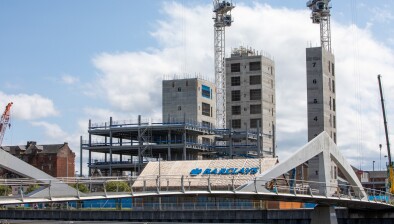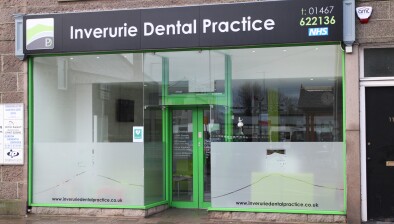Click-and-collect economy worth over £2.55bn in Scotland

The click-and-collect economy swell to be worth over £42.4bn in the UK this year.
A new report released today by Barclays Corporate Banking reveals that click-and-collect shopping will be worth £2.55 billion in Scotland this year, representing 38.4% of retail income north of the Border.
This growth follows the broader national trend, that has seen the click-and-collect economy swell to be worth over £42.4bn in the UK this year – a significant 8.4% of the industry’s total annual income.
However, business rates as well as supplier, transport and logistics costs are currently placing the biggest strain on Scottish retailers’ profitability, and consumers north of the Border are looking to cut 26.2% of their retail outgoings in the months ahead, as the rising cost of living begins to take hold.
The study - ‘What’s in store for retail?’ – focuses on retail businesses with over ten employees, and looks at the rise of ‘hybrid’ shopping, which involves both physical and digital interactions. Click-and-collect, where goods are bought online but picked up from a physical store, now accounts for 38.4% of sales for retailers who offer the service in Scotland, up from 27.6% a year ago.
The popularity of the service grew during the pandemic but, unlike pure online sales which peaked during that period, it has continued to grow post the lifting of lockdown restrictions, indicating that click-and-collect is a consumer behaviour that is here to stay.
The click-and-collect economy now also underpins 13,900 jobs across the industry in Scotland, which equates to 4.8% of the region’s retail workforce. Over a third of physical stores in Scotland (39.3%) are now used as click-and-collect locations, with over four in every ten stores (41.1%) being used to process returns.
Barclays’ data demonstrates how online and physical retail sales channels are becoming more intertwined. Consumers in Scotland like to research products online and in-store in equal measure across a number of products, including homeware (35.3%), fashion (34.6%) and electronics (32.3%).
The research also reveals that having both an online and physical presence can be advantageous for a retailer’s appeal. One in ten consumers (14.6%) in Scotland say they can be hesitant when buying from online-only brands, a figure which drops to 8.5% when businesses also have physical stores.
Despite the increasing popularity of online shopping, there is still support for high streets. When asked whether there is a future for physical retail space, 65.2% of consumers in Scotland agreed that there is, of whom 27.4% strongly agreed. However, there is a clear demographic split across the UK: just over half (54%) of 16-24-year-olds believe in the future of the physical store, compared with almost three quarters (74%) of over 55s.
What the report clearly spells out is that, following the inevitable acceleration in the shift to digital during the pandemic, consumers are now returning to stores to make their purchases with confidence, and trust in bricks and mortar stores is still strong.
Almost nine in ten (86.3%) of retailers in Scotland feel that operating a physical store is vital to their business success. However, many are re-evaluating where their real estate is based, to make sure they occupy the most appealing destinations for consumers.
More than six in ten (62.5%) retailers from Scotland have reduced the number of stores they have in city centres, while 35.3% have increased their presence in retail parks. An increased presence in retail parks will likely be popular with Scottish shoppers, 34% of whom, say it is their preferred location for a store.
Amid these changes, the cost-of-living increase is creating additional challenges for retailers. Barclays’ research shows that British shoppers are aiming to reduce their spending by between 25% and 30% before the end of the year, across a broad span of retail categories.
However, the biggest strain on business profitability in Scotland is business rates and supplier, transport and logistics costs which were selected by 27.5% of the retailer respondents, ahead of food costs (25.5%), staff wages (21.6%), and rent (21.6%).
In the industry’s scramble for talent, the top three roles Scotland’s retailers are most commonly looking to hire are:
- Staff with strong communications skills (19.6%)
- Sales staff (19.6%) and
- Customer service staff (19.6%)
In response, retailers in Scotland are investing around £493,600 each to increase their workplace appeal.
Euan Murray, relationship director, Barclays Corporate Banking, said: “Perhaps more than any other sector over the past two years, retail has been forced into a period of accelerated evolution. The pandemic drove everyone online, and now the rising cost of living is increasing business outgoings while reducing consumer spending.
“Encouragingly for the UK’s retail sector, however, businesses are adapting their sales models to weather these financial storms as effectively as possible. Links between digital and physical shopping are being evolved, which are opening up new opportunities and ways to generate income.”







